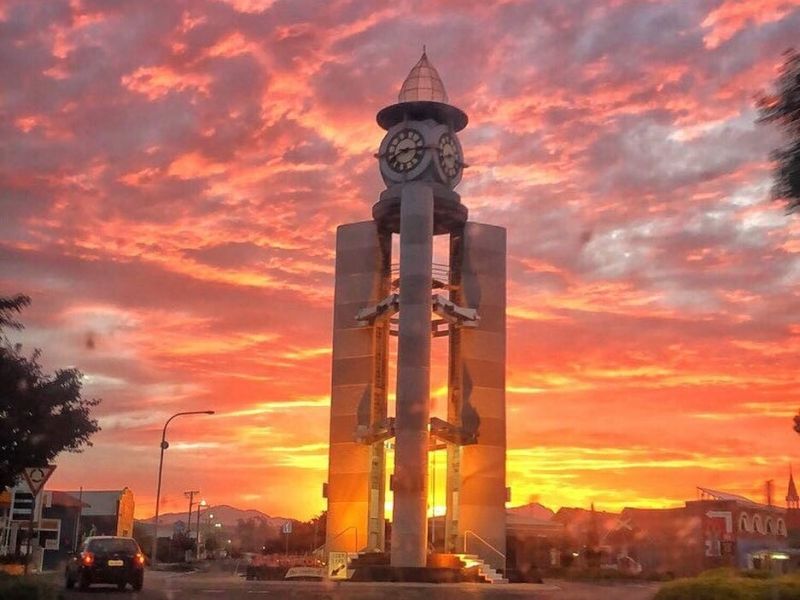A short history of the Ulverstone Cenotaph
The Shrine is a clocktower built by immigrants in 1953 which represents the three military services. The clocktower itself is built over the original World War One monument which was unveiled on Anzac Day 1924.
A public meeting in 1946 agreed on a clock tower as its 1939-45 memorial and a committee was set up to bring this into being. Much work was accomplished during the years between its inception and the time when a tender was accepted for its erection on 27th July, 1953. Difficulties in securing a site ended when it was agreed to place it where the 1914-18 memorial stood at the intersection of Reibey St, Risby St, and Alexandra Road, the highest point in the town. This memorial was incorporated in the new memorial.
A new arrival in Ulverstone, Cvetko Florian Mejac, from Slovenia, offered to prepare plans and specifications free of cost to the committee which accepted a design submitted by him. A four faced electrical clock was ordered from Ingrams Bright Pty Ltd of Melbourne at a cost of £1,100. A public appeal for funds was opened and well supported. The state Government subscribed £3,000. The municipal Council gave approval for the work to proceed and tenders were called for. Only one tender was received this being from ‘Artisan’, South Road, Ulverstone, members being Jernej Bajzelj, Rudy Zimic, both Slovenians, and John McNeill. This tender was accepted and work commenced on July 30th, 1953, and completed January 5th, 1954.
The design features include: The base represents the blue sea and is the outline of Tasmania. It was painted red by the local council some time after, according to Jernej Bajzelj. Out of the land rise three columns, presented as three open books standing upright. They represent the armed services of the army, navy and air force. On the inside surface of the columns, glass rectangles bear the names of the municipality's fallen of World War II. The three chains unite the armed services. Above the pillars is the four-faced clock, which sees in all directions. It represents time and eternity. At the apex is the Torch of Remembrance, kept burning to signify memory. At the heart of the shrine stands the 1914-1919 War Memorial Cenotaph. The central stone circle is blood- red and represents the altar of sacrifice. A laurel wreath hangs from the base of the clock, a symbol of heroes and victors. Woven into the leaves of European laurel are wattle flower heads in groups of three.
